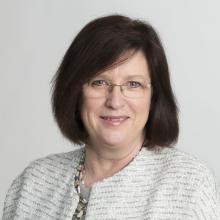
Releasing the lines company’s annual results, Ms McKenzie said Chorus was working with various retailers in completed fibre areas or encouraging residents to connect as Chorus built the street network in new areas.
The goal was to improve customer experience further by reducing the time they needed to be home for an installation to less than a day, while also balancing fluctuations in orders for the workforce, she said.
Chorus reported an operating profit of $652million for the year ended June, up from the $595million reported in the same period last year.
The reported profit was $113million, up from $91million and operating revenue of $1.04billion was up on the $1billion reported last year.
Depreciation and amortisation for the period was $339million compared with $327million in the previous period.
The company declared a final dividend of 12.5c per share.
Total fixed line connections were down 7% to 1.6million and broadband connections were down 3% to 1.9million.
Ms McKenzie said the financial result was underpinned by a strong focus on costs as Chorus streamlined copper provisioning processes and began capitalising labour expenses relating to some fibre provisioning costs.
The ultra-fast broadband (UFB) programme was continuing at pace and Chorus was now 70% of the way through the first phase, compared with 57% at this time last year, she said.
‘‘This means 778,000 customers are now able to connect to the best possible broadband speeds of up to one gigabit per second.’’
Across the Chorus UFB network, more than one third had connected to fibre, or 275,000 connections at the end of June.
That was a big jump from 156,000 connections, or a 24% uptake last year.
The promotion of better broadband had been supported by a growing awareness of the importance of reliable broadband at peak demand times, Ms McKenzie said.
In the past year, there was a 51% increase in the average amount of internet traffic through the Chorus network about 9pm each night.
The trend seemed set to continue as more New Zealanders used their broadband connection to stream video content on demand.
‘‘Fibre is clearly the best technology to meet ever-increasing and changing data demands.
‘‘Given the likely infrastructure requirements and service characteristics of future wireless technology, and the extensive nature of our fibre to the home network, we believe wireless will continue to be a largely complementary access to technology.’’
Craigs Investment Partners broker Chris Timms said the key surprise was the change in the 2018 capital expenditure outlook to $780million to $830million.
The major changes flagged included: $50million to $70million for UFB2 communal spend; $125million to $145million for copper; $10million for fibre previously expensed; and $20million on pole replacement both copper and fibre.
Chorus was forecasting and operating profit of $625million to $650million and a dividend of 22c per share, subject to no material adverse changes in circumstances and outlook.












